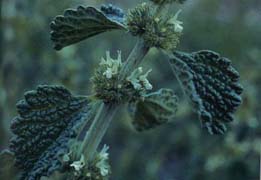Jay Carmony 01/17/07 Healing Gardens: Winter
Reflective Writing 1
1. Compare the descriptions of ecosystems or zones in each text:
So far as I can tell the names of zones are based off of current plant types (Deur & Turner) and climax communities (Kruckeberg).
2. Discuss your understanding of relationships between natural systems and cultural systems in the Northwest:
Two cultural views that interact with the natural systems are 1) western and 2) first peoples. The former seems to carry its historical views with it- not only view but the ways and like of how society should interact with its place. Westerners seem to want to eat Cole crops, export resources unsustainably, exterminate and assimilate anyone who is different and then move on to a new place when these resources are gone. The latter are peoples who had no going back- they survived without lines back to the “east”- yes they traded, but to the extent of helping their own and mostly on a level where they could sustain their resources as this was the key to survival. Ecosystems where manipulated but as a whole- apparently they new that mimicking natural disturbances could yield more than planting and gowning crops and animals that where not native.
Natural systems interact with one another in many ways: ever changing and ever responding to change. This lends diversity- disturbance does not a have a negative connotation with in the natural world. It is what drives life to change and diversify - to run against entropy. The world is connected by a web- all abiotic and biotic factors- subterranean, atmospheric, terrestrial, oceanic, and aquatic with all the ecotones between.
3. List the plants you can identify:
Douglas fir, Western Red Cedar, Western Hemlock, Red Alder, Bigleaf Maple, Vine Maple, Grand fur, Pacific Silver Fur, Alaskan Yellow Cedar, Lodgepole Pine, Cascara, Red Huckleberry, Alaskan Huckleberry, Evergreen Huckleberry, Trailing Blackberry, Bracken Fern, Licorice fern, Nettle
4. List some ideas you’ve gained through reading and Saturday activities that you could apply to the work on a habitat at TESC Longhouse Garden:
Some plants need disturbance- like fire- I have witnessed how fire changes a system. I wonder if this could be applied in the areas of dry forest and grassland to better suit the soil for the desired plants to be grown?
Perhaps a soil test of the medicinal beds is appropriate- maybe for the grounds as a whole and parts? – at least determining what the clay/sand/loam class is…
Mushroom logs?
Margins yield diversity and allow for boundaries of ecosystems.
Plants come in communities: under story/canopy, succession stages, ecotones…
